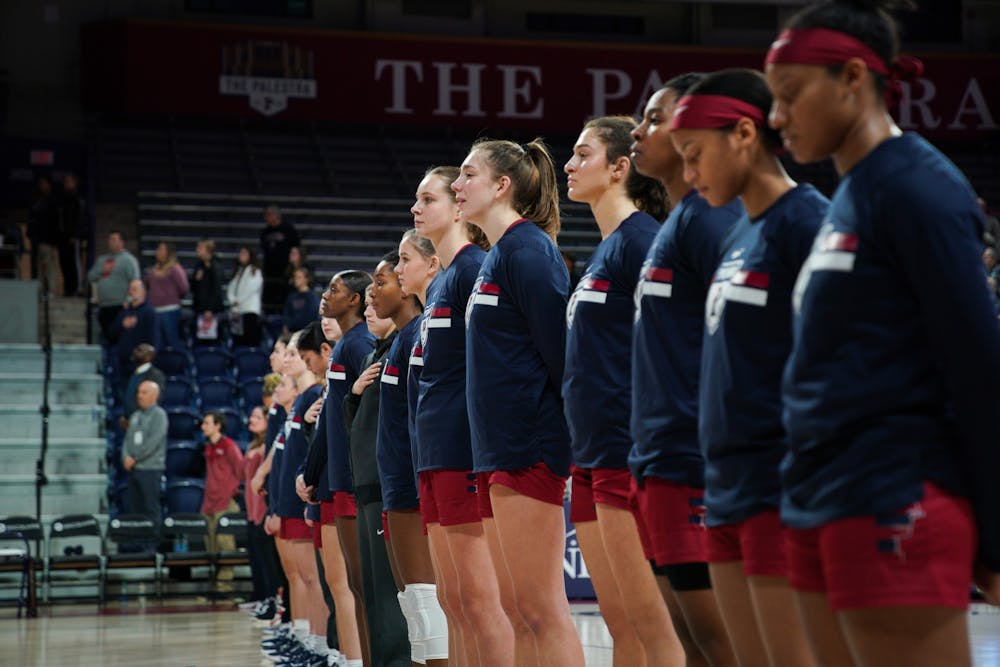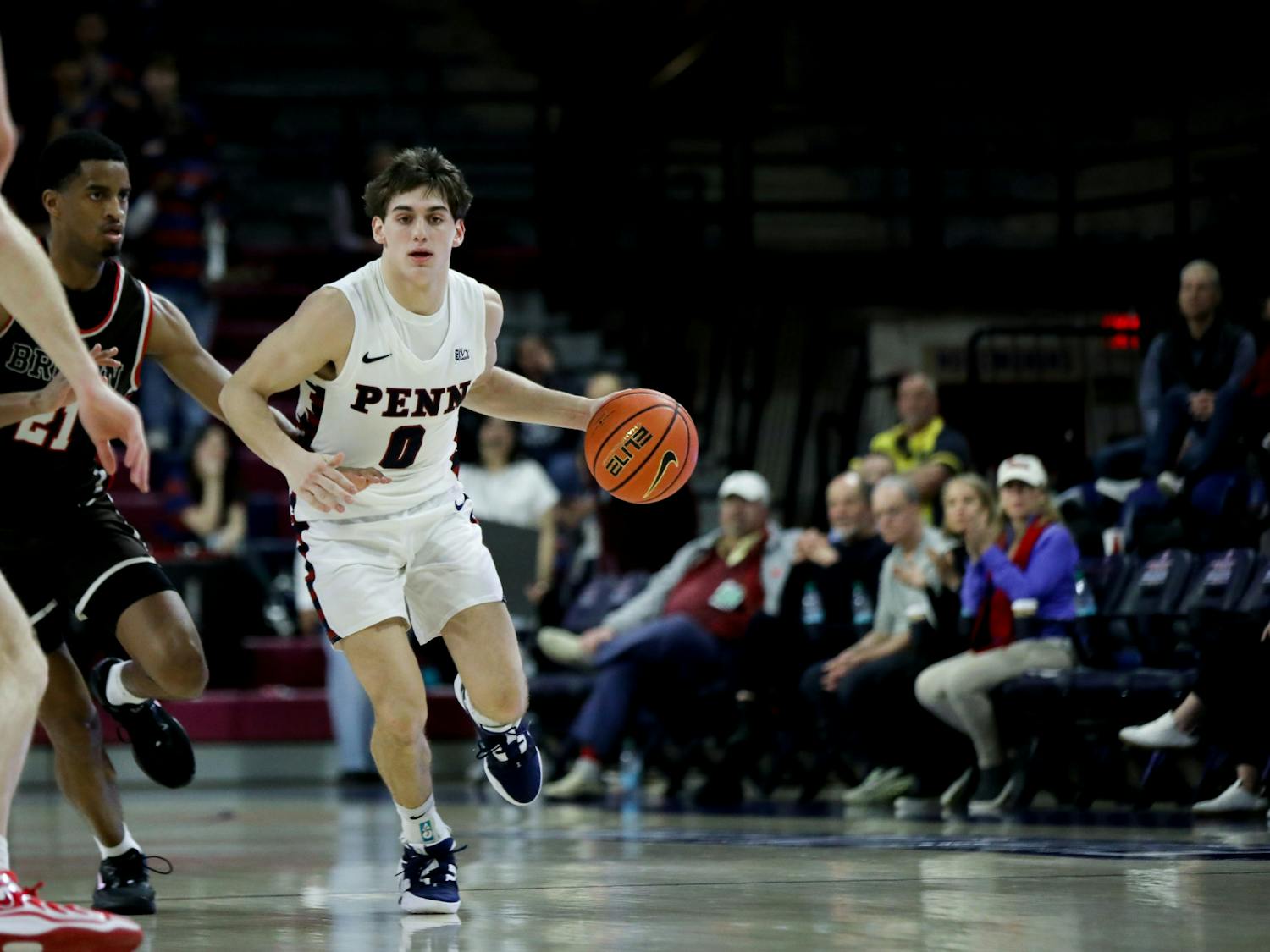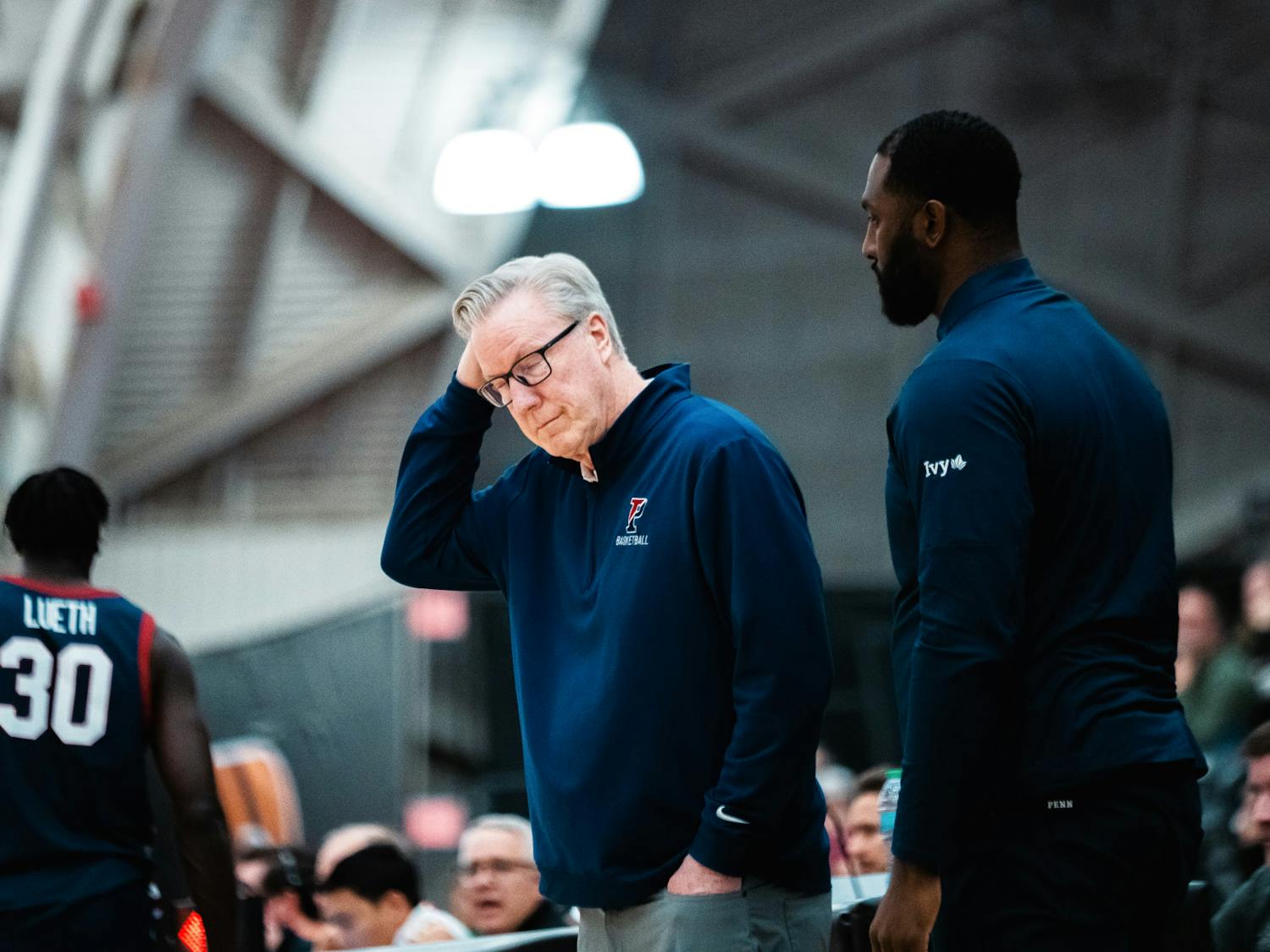Amid the ever-changing landscape of college sports, the Ivy League has refused to budge. Now, it may be forced to.
The conference’s identity is steeped in tradition — it is committed to maintaining the values that have made it one of the nation’s most distinguished groups for nearly a century. But recent legal action has placed one of the league’s most sacred pillars under siege, and the results may alter the lives of the athletes that call the conference home.
On March 7, lawyers representing Grace Kirk, a current Brown women’s basketball player, and Tamenang Choh, who played for the Bears from 2017-22, filed a lawsuit against the Council of Ivy Presidents, as well as its eight constituent schools. The suit alleges that the conference’s practice of refusing to administer athletic scholarships is a violation of federal antitrust law. The plaintiffs are seeking monetary damages, but — more significantly — they are seeking an injunction that would allow Ivy League schools to distribute scholarship compensation moving forward.
“This has been a long time coming,” Kayla Padilla, Wharton senior and captain of Penn’s women’s basketball team, said. “A lot of people are accustomed to the idea that the Ivy League is more focused on academics, and they don’t want to compromise that by offering athletic scholarships. But you don’t have to make that compromise.”
Penn Athletics did not respond to a request for comment.
In many ways, the case is about precedent. The plaintiffs say that this case challenges the prevailing orthodoxy of the Ivy League, but it is also based firmly in the result of another pivotal college athletics case, NCAA v. Alston. Decided in 2021, the Supreme Court ruled that the NCAA’s restrictions on education-related compensation were a violation of antitrust law. This decision led to the passing of the organization’s new Name, Image, and Likeness (NIL) policy, which allows athletes to receive compensation from brands in the form of endorsements.
From the plaintiff perspective, this ruling should be applied directly to the Ivy League. According to the argument, though the conference was not a party in the Alston case, they are a part of the NCAA and as a result should be held to the same antitrust standards as the governing body at large. The plaintiffs insist that if the NCAA cannot limit the way athletes receive education-related compensation, then the Ivy League should not be allowed to restrict scholarships.
The league’s policy is also rooted in their mutual agreement to not administer merit-based financial aid. Wharton statistics professor Abe Wyner said that opponents of the push for athletic scholarships have posited that athletes should not be treated any differently than students who are exceptional in other ways. He added that people argue that the conference’s handling of aid in exchange for talent must remain the same across the board, whether that talent is shooting a basketball or playing an instrument.
RELATED:
Penn hosts Energy Week to generate awareness about scholarship, equity in energy
New partnership between SP2 and Bonner Foundation to increase access to higher education
“The Ivy League has a policy that the only dispensation you get on tuition is financial need,” Wyner, who serves as the faculty lead for the sports analytics and business initiative, said. “You don’t get a merit scholarship for being smart. You don’t get an athletic scholarship because you’re good at sports. You don’t get a music scholarship because you’re good at violin. To me, athletics is not any different than those things. You just don’t get scholarships.”
Wyner’s perspective of equating athletes with the general student population is echoed by the Ivy League itself. Robin Harris, the conference’s athletic director, said in a statement to The Athletic that the conference is “built upon the foundational principle that student-athletes should be representative of the wider student body, including the opportunity to receive need-based financial aid.”
Padilla said that this idea perpetuates a false reality and diminishes the additional sacrifices that student-athletes make, and that universities benefit from. According to the legal complaint file, Ivy League schools as a whole generated a rounded total of $267 million from athletics during 2020-21.
“Student-athletes here are living a totally different experience,” Padilla said. “Oftentimes student-athletes and college athletics as a whole are a big part of the University and what it represents. That all can still happen, even if we were awarded scholarships.”
As many conferences and institutions have raced to adapt to the evolving norms of college sports, the Ivy League has been content to remain in place, a Rolex in a sea of smart watches. To a degree, Wyner said, their rigidity has worked. He notes that Ivy League schools have begun to nab “much higher-caliber players than they used to,” and suggests that recruits have started to place greater consideration upon the value of an Ivy League education.
Padilla said that the decision to join the conference was “not a four-year commitment, it is a 40-year" decision, referencing the array of benefits that await an Ivy League student athlete even after they have laced their sneakers for the final time.
But in other ways, the so-called “Ancient Eight” has fallen behind, according to Padilla. As NIL transforms the way athletes operate, its benefits remain more of a dream than reality for most Ivy Leaguers. Padilla is currently in the transfer portal for her final year of eligibility, and she added that one of the schools recruiting her is averaging $50,000 in NIL money per player.
“Being an Ivy League institution, you know NIL is not the biggest priority here,” Padilla said. "But when you hear stuff like that, it's like, 'Wow, my life could be changing if I had that kind of money.'"
Padilla also highlighted the discrepancy in the way other universities invest in their athletes, from chartered flights, to fuel centers, to athlete-centered spaces. Though Padilla had nothing but kind things to say about Penn and its Athletic Department, she says the transfer recruitment experience has allowed her to see “what [she] might have missed out on.”
“Not to fault Penn, but the way they treat athletes at these programs is seen as a different priority,” Padilla said.
The lawsuit filed against the Ivy League does not demand fuel-centers or chartered flights, but the position of the plaintiffs is demonstrative of the perspective held by many regarding the conference’s policies — that the Ivy League is so steeped in tradition it risks becoming antiquated in the midst of an athletic revolution.
But the Ivy League way has been prosperous for decades, and Wyner claims that there is compelling evidence for the conference to stand by its successful model. As the scholarship lawsuit challenges that model in a way not seen before, the future of Ivy League athletics hangs in the balance.
“It’s not a fault; it’s just different,” Padilla said of the way Penn and the Ivy League operate compared to other institutions. “People are used to that because it has been so long that the league has operated like this. I think things will definitely change if this lawsuit is successful, but, even if it’s not, I think it will put some pressure on the Ivy League to make changes that can still benefit the student-athletes without having to compromise.”








